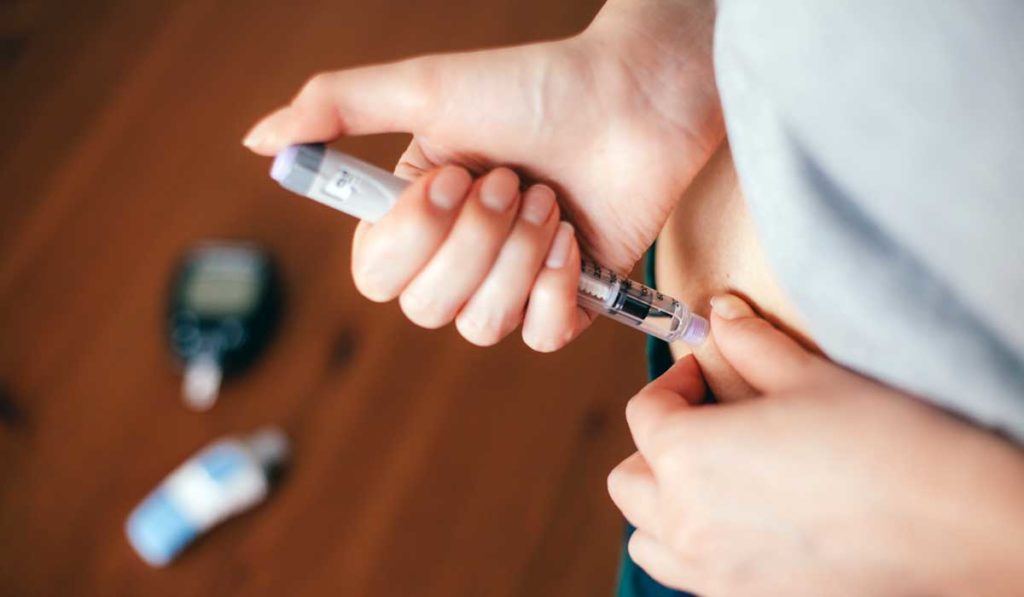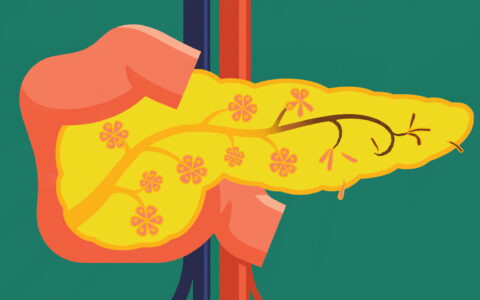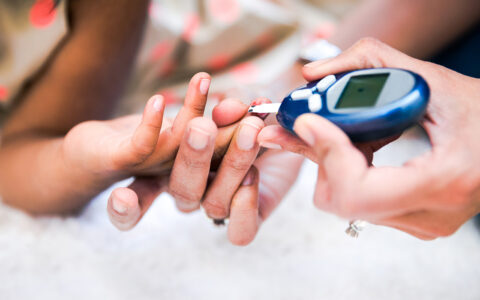Studies to understand insulin resistance in type 1 diabetes have yielded mixed results. Some have attributed insulin resistance to hyperglycemia, while others show little correlation, says Justin Gregory, M.D., a pediatric endocrinologist at Monroe Carell Jr. Children’s Hospital at Vanderbilt.
“There’s more to treating type 1 diabetes than just bringing down high blood sugar,” Gregory said.
Gregory has been studying insulin resistance and looking for ways to restore insulin sensitivity in patients with type 1 diabetes, who have approximately 40 percent lower insulin sensitivity than other populations. Gregory’s most recent study, published in Diabetes, shows chronic exposure of muscle tissue to insulin injections contributes substantially to resistance – even more so than hyperglycemia.
Unique Study Populations
Injecting insulin into fat tissue bypasses the liver, which normally breaks down approximately half of insulin made by the pancreas, Gregory said. As a result, insulin levels are high in muscle tissue of people with type 1 diabetes.
“There’s more to treating type 1 diabetes than just bringing down high blood sugar.”
For their new study, Gregory and colleagues compared three distinct populations: healthy people (controls), people with type 1 diabetes, and people with glucokinase-maturity-onset diabetes of the young (GCK-MODY, also known as MODY2). People with GCK-MODY produce insulin, but are hyperglycemic, due to a rare genetic mutation in their glucokinase gene.
All study participants were between the ages of 13 and 51. Each group had a different mix of insulinemia and glycemia: those with type 1 diabetes were hyperinsulinemic and hyperglycemic, while those with GCK-MODY were hyperglycemic only. The differences allowed Gregory’s team to assess the relative contribution of each factor to insulin resistance.
Comparing Insulin Sensitivities
The researchers used clamp techniques to adjust and standardize blood glucose levels among participants. Then, they compared insulin levels between groups.
Participants with GCK-MODY had the same level of insulin as healthy controls, indicating their muscle tissues were equally sensitive to circulating insulin. But those with type 1 diabetes had insulin levels that were two-and-a-half times higher than either of the other groups, indicating their tissues were resistant to insulin and required much higher doses to move glucose out of the bloodstream. The results suggest hyperinsulinemia as a major driver of insulin resistance.
Explained Gregory, “In type 1 diabetes, people have too much insulin at muscle and not enough at liver – all because they are putting insulin in the wrong place. Restoring that balance is important toward helping people with type 1 diabetes reduce their risk of heart disease.”
Therapeutics to Overcome Resistance
Insulin resistance is closely linked to microvascular disease and other comorbidities in type 1 diabetes. Overcoming insulin resistance is the next challenge, Gregory says, to help prevent these complications.
“The study brings to light the need to develop therapeutic strategies to keep the appropriate balance of insulin between the liver and peripheral insulin-sensitive tissues.”
Gregory is collaborating with colleagues at the Vanderbilt Diabetes Center and elsewhere to develop new therapies. One option may be to develop insulin analogs that preferentially target the liver, or to implant pumps inside the abdominal space so insulin more quickly reaches the liver. Either approach could better recapitulate how insulin naturally produced by the pancreas is processed in the body.
“We need to come up with a way of delivering insulin that replicates that normal balance of insulin, that’s the best way to mitigate insulin resistance in these patients.”
A simpler strategy may be a low carbohydrate diet. The researchers are currently conducting a crossover study of people with type 1 diabetes assigned to either a low- or standard-carbohydrate diet, where each diet has the same number of calories. Throughout the nutritional intervention, the researchers monitor food intake, blood sugar, insulin doses and insulin sensitivity before participants cross over to the other diet. The study could reveal how dietary changes naturally affect insulin sensitivity in people with type 1 diabetes.
“We need to come up with a way of delivering insulin that replicates that normal balance of insulin,” Gregory said. “That’s the best way to mitigate insulin resistance in these patients.”





